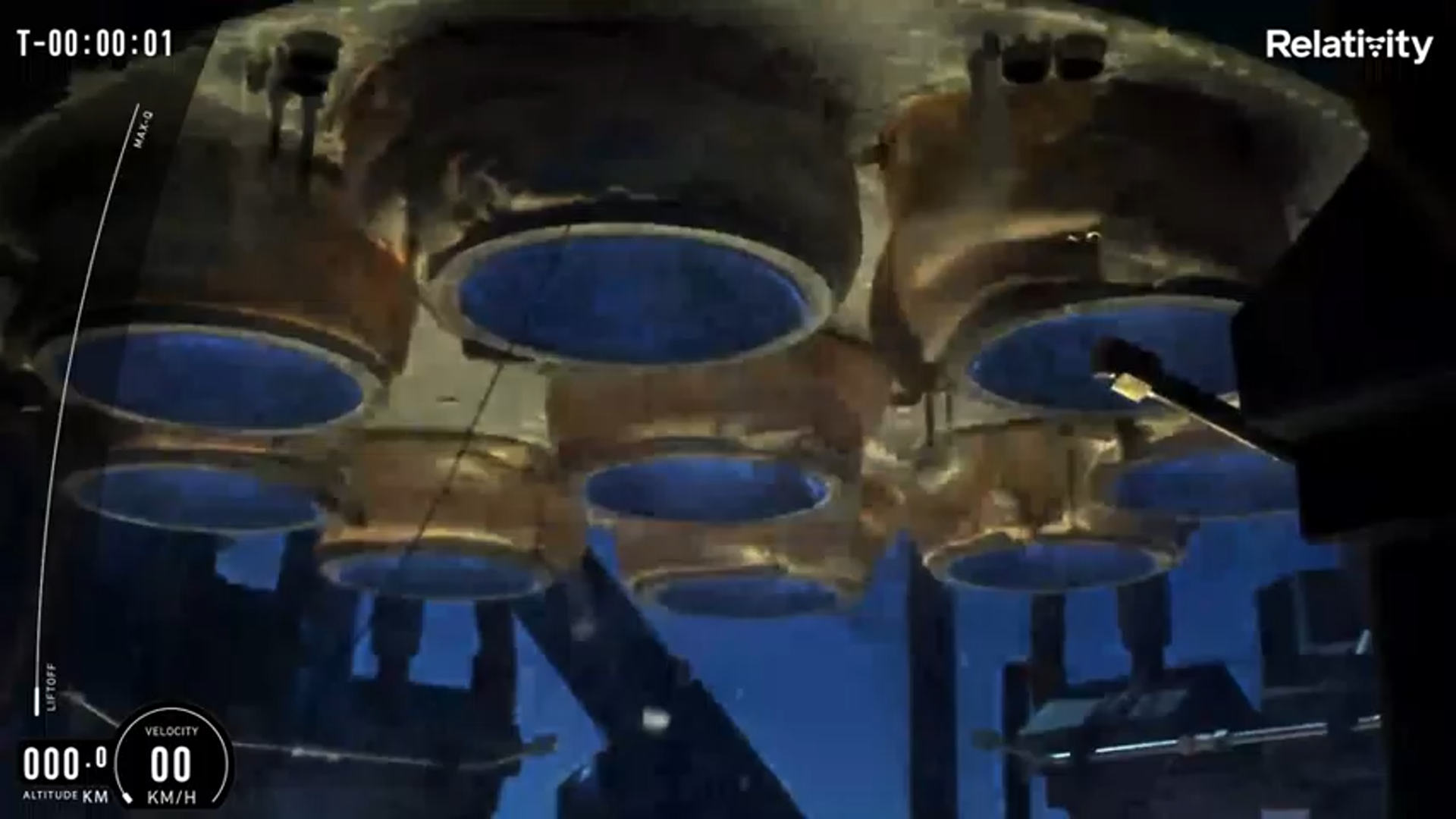
After a disappointing scrub last Wednesday, due to a nagging issue pertaining to the thermal conditioning of its propellant load of Liquid Natural Gas (LNG) and Liquid Oxygen (LOX), Relativity Space met with further misfortune on Saturday, when a nail-biting second effort to get its first Terran-1 booster off the ground from Launch Complex (LC)-16 at Cape Canaveral Space Force Station, Fla., was aborted seconds prior to liftoff. Teams will now await a third opportunity to fly a mission whose upbeat name of “Good Luck, Have Fun” has thus far produced little luck and precious little fun, though has certainly furnished more than its fair share of excitement and drama.
Relativity Space, founded back in 2015 by aerospace engineers Tim Ellis and Jordan Noone—formerly of Blue Origin and SpaceX, respectively—is based out of Long Beach, Calif., and seeks to develop a fleet of orbital-class launch vehicles, produced almost entirely through additive manufacturing. Via its in-house-designed Stargate system, about 85 percent of the total mass of the first-generation Terran-1 rocket is 3D-printed, as Relativity aims to build entire boosters, priced as little as $12 million, in under 60 days.
Although the first Terran-1 mission ferried no payload uphill, it did carry a 3D-printed piece from the Stargate printer, measuring 6.5 inches (16.5 centimeters) across and weighing in the region of 3 pounds (1.4 kilograms). But as outlined in AmericaSpace’s Terran-1 pre-launch story, the rocket’s capacity to lift 2,750 pounds (1,250 kilograms) to a low-Earth orbit of 115 miles (185 kilometers) and up to 1,500 pounds (700 kilograms) to a Sun-synchronous orbit of 750 miles (1,200 kilometers) has already won it a burgeoning commercial clientele, ranging from Telesat to Momentus and from Iridium to Spaceflight, Inc.
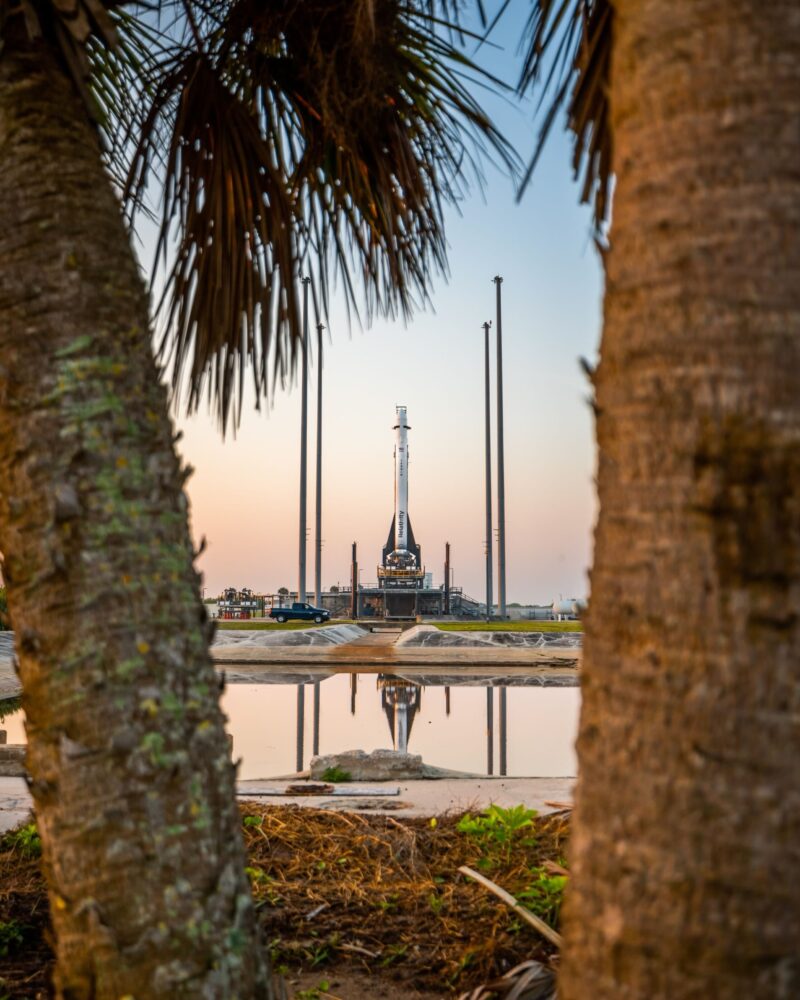
After the Terran-1 flight hardware arrived at the Cape last June, it was put through an intensive regime of spin-start tests of its nine Aeon-1 first-stage engines, with a Federal Aviation Administration (FAA) license initially covering July through December for its inaugural launch attempt. But the need for additional hot-fire tests, Eastern Range issues and last September’s onslaught of Hurricane Ian pushed the mission deep into the fall and eventually into the spring of 2023.
Last Wednesday, notwithstanding picture-perfect weather conditions along the Space Coast, the first launch attempt was scrubbed when an issue arose with thermal conditioning of the rocket’s load of Liquid Natural Gas (LNG) and Liquid Oxygen (LOX). After several holds, engineers successfully pressed towards the Terminal Count, establishing Terran-1’s propellant tanks at flight pressures, priming the nine Aeon-1 engines for ignition and starting the retraction of the Transporter-Erector (TE) “strongback”.
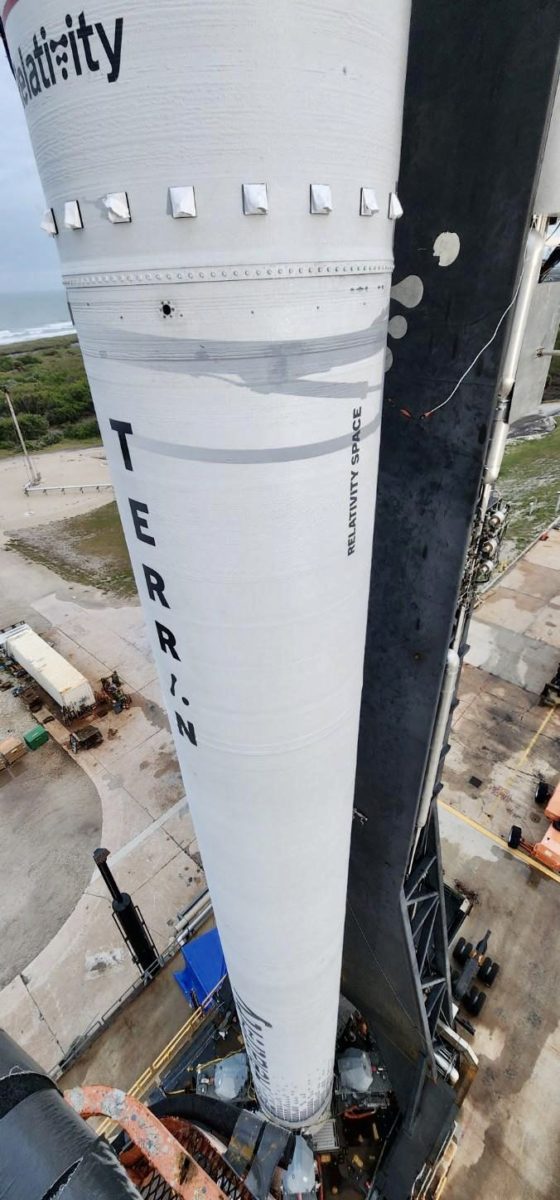
But Wednesday was not Relativity’s day. Agonizingly, at T-70 seconds, just as the rocket’s on-board computer prepared to assume primary command of all vehicle critical functions, an autonomous abort was called. Efforts continued to achieve a launch as the last minutes of the launch window ebbed away, but it was not to be.
“Today’s launch attempt…was scrubbed due to exceeding Launch Commit Criteria (LCC) limits for propellant thermal conditions on Stage 2,” Relativity explained in the minutes after the scrub, with updates placing the blame upon a malfunctioning Ground Support Equipment (GSE) valve. “Additional mitigations” were reportedly put in place to ensure that Terran-1’s oxidizer load was kept within its requisite temperature range. It was subsequently determined that the next available opportunity to launch was during a three-hour window from 1 p.m. through 4 p.m. EST Saturday.
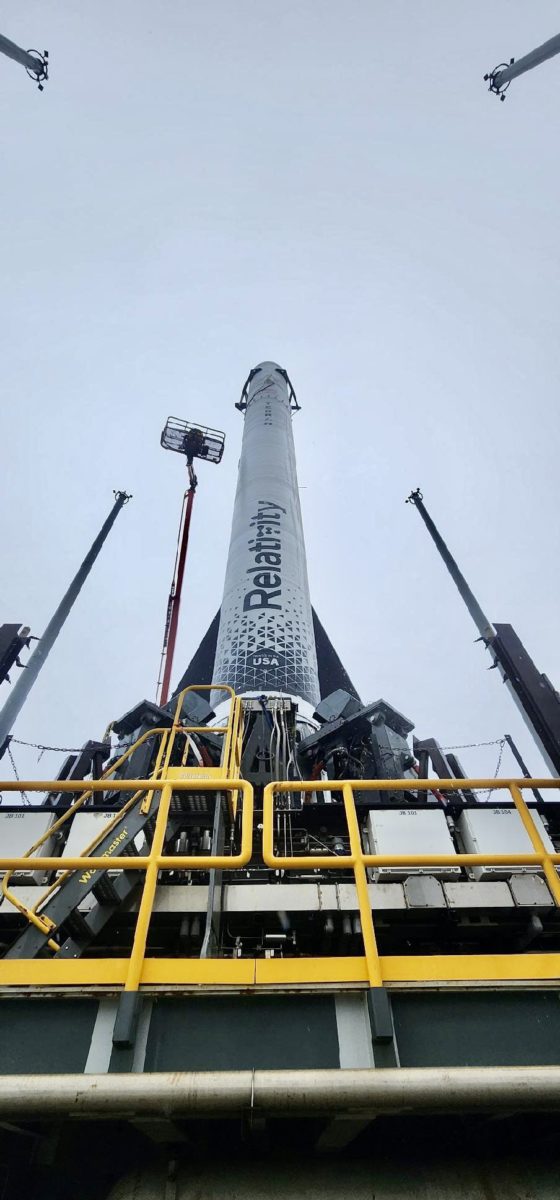
Weather conditions for the weekend were predicted to be highly favorable, pledging 90-percent “Go” for Saturday’s window and notching up to 95 percent on Sunday. “The potential for showers will continue into the night,” noted the 45th Weather Squadron at Patrick Space Force Base in its L-1 forecast on Friday, “but the threat for thunder should end during the early evening hours.”
A strong cold front, forecasted to move through Central Florida from late Friday, was expected to cause cloud cover to move out of the region by Saturday’s launch window. “Some low clouds are likely to be around at the beginning of the count,” added the 45th, “but should move out of the area rather quickly.”
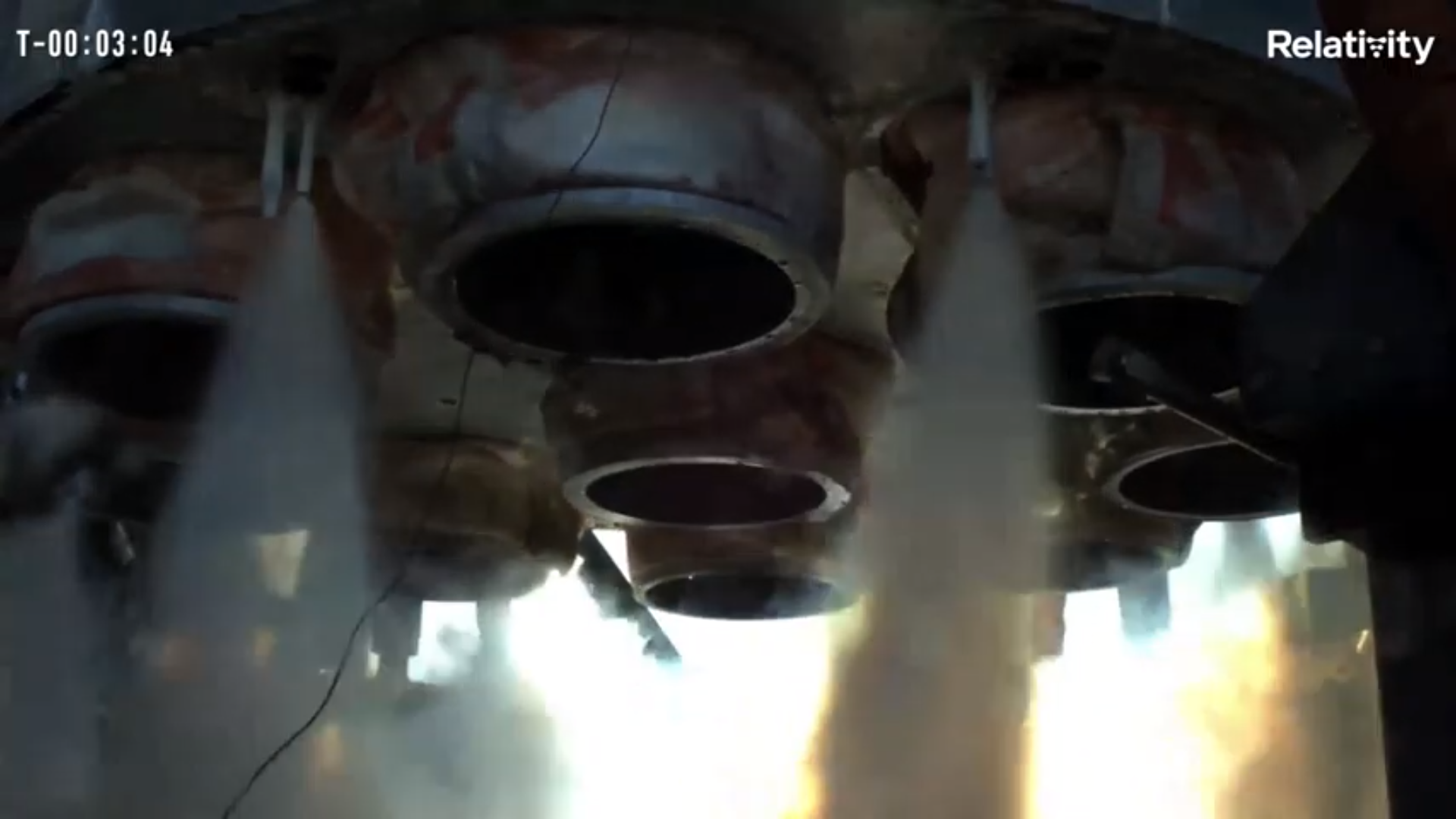
Overall, this highly positive meteorological picture was threatened only by a slight chance of violating the Cumulus Cloud Rule, in the event a few stray clouds remained in the area. Scattered cumulus clouds were expected between 3,500 feet (1,000 meters) and 7,500 feet (2,200 meters), with temperatures hovering around 23-26 degrees Celsius (75-80 degrees Fahrenheit) and visibility about 7 miles (11.2 kilometers).
Relativity headed into Saturday will bullish optimism. “Pad is cleared,” it tweeted a little after 9 a.m. EST, sharing beautiful sunrise behind their 3D-printed bird.
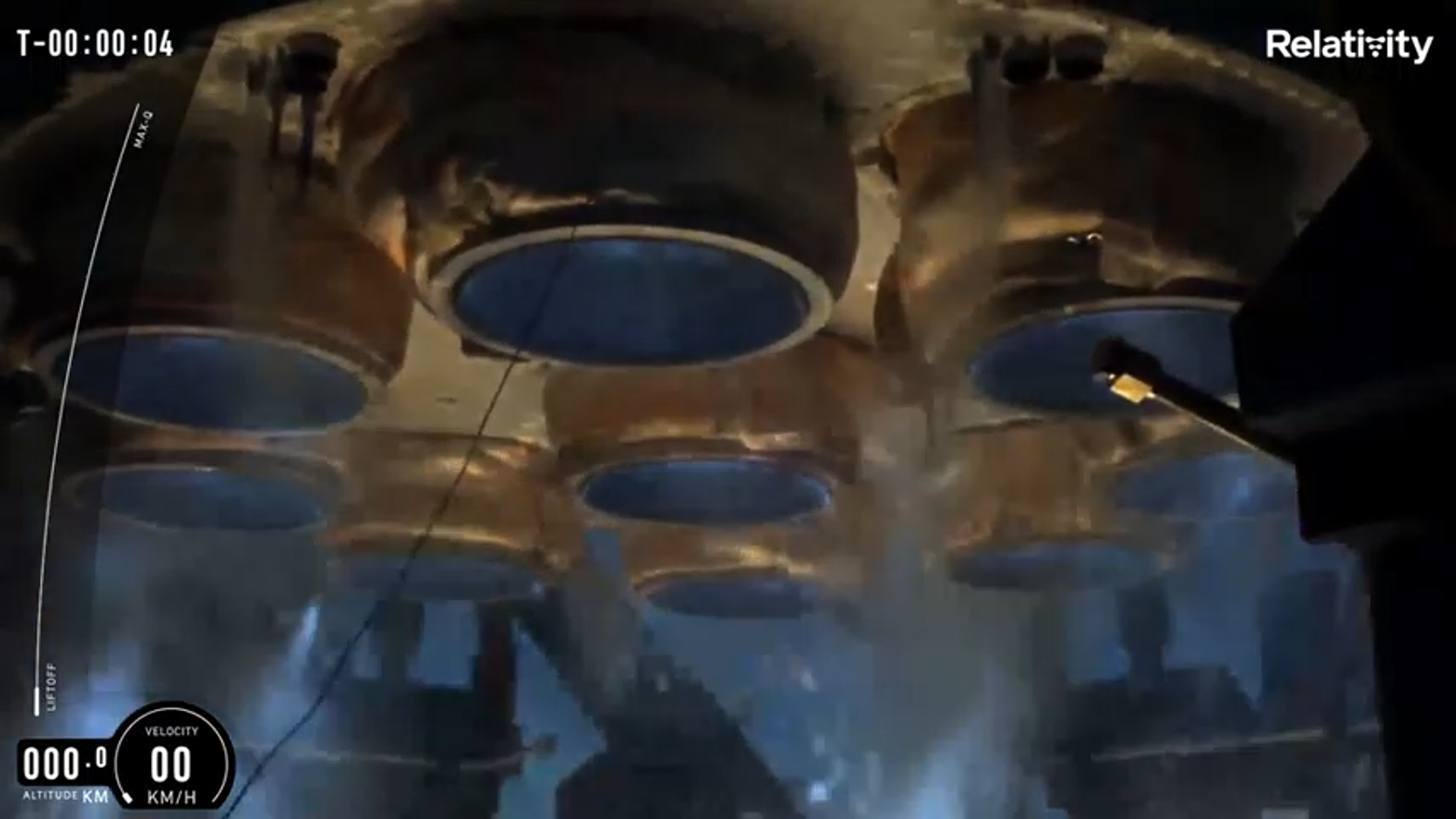
But, as she has often proved to be, Mother Nature is a difficult mistress with whom to work. “We are Go for prop load, which is getting underway,” Relativity tweeted at 10:30 a.m. EST, as LNG and LOX began flowing into the tanks of the 110-foot-tall (33.5-meter) rocket, “but upper-level winds are a potential concern today and we are continuing to monitor.”
As propellant loading wrapped up, Relativity targeted a new T-0 at 1:45 p.m. EST, a little less than an hour into the window. “Range is Green, vehicle is healthy,” it tweeted. “We’re continuing to monitor upper-level wind conditions.”
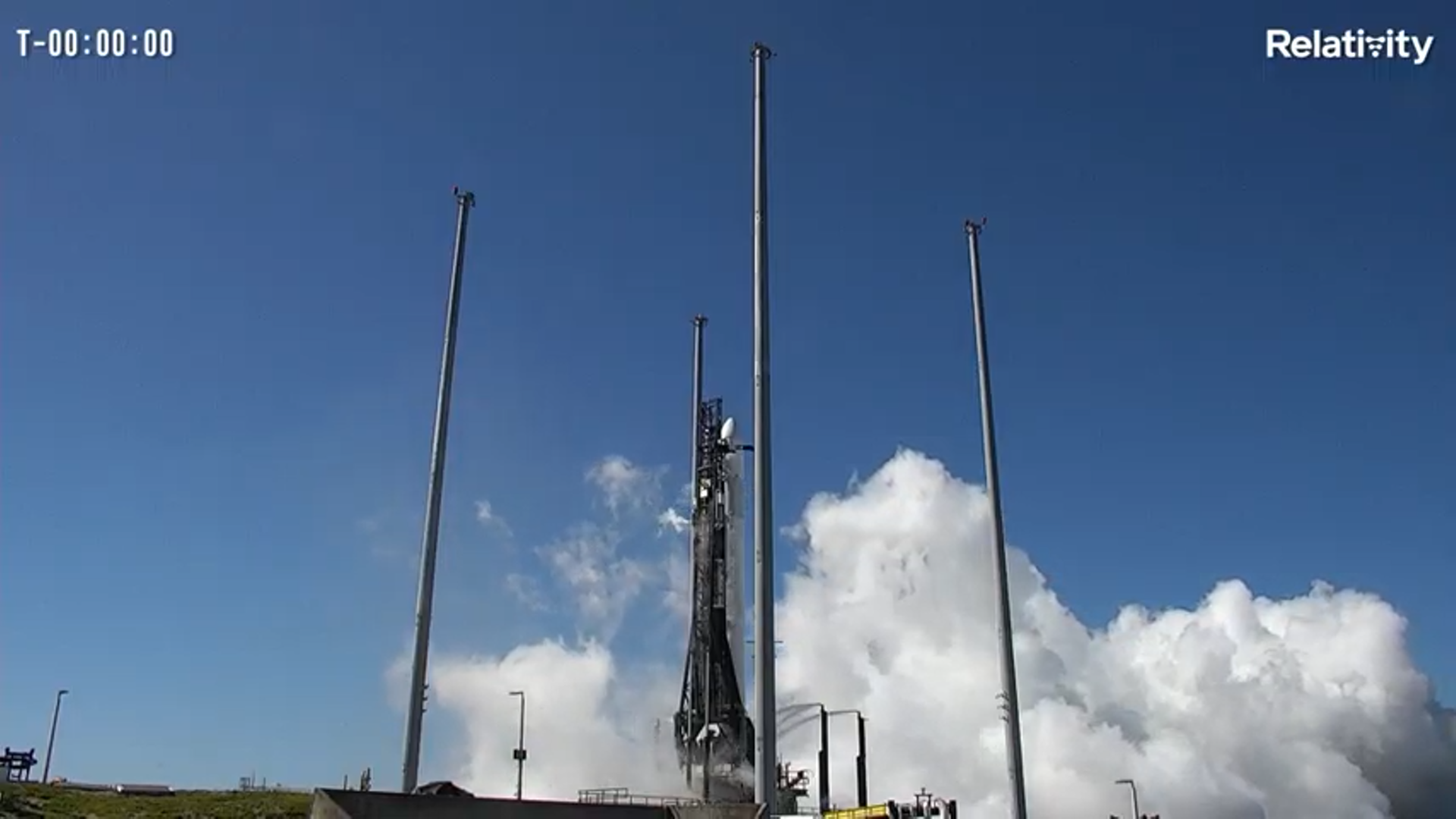
However, as clocks headed towards T-20 minutes, teams elected to place a hold on the countdown, due to “marginal” upper-level winds. A revised T-0 of 2:35 p.m. EST was established, just past the halfway point of Saturday’s window.
Launch Director Clay Walker polled his team at 2:20 p.m. EST, receiving an encouraging string of “Go” calls across the net. Heading deep into the Terminal Count, the TE retracted on command from Terran-1 at T-3 minutes, as the rocket transitioned to internal power and headed towards Terminal Count at T-70 seconds.
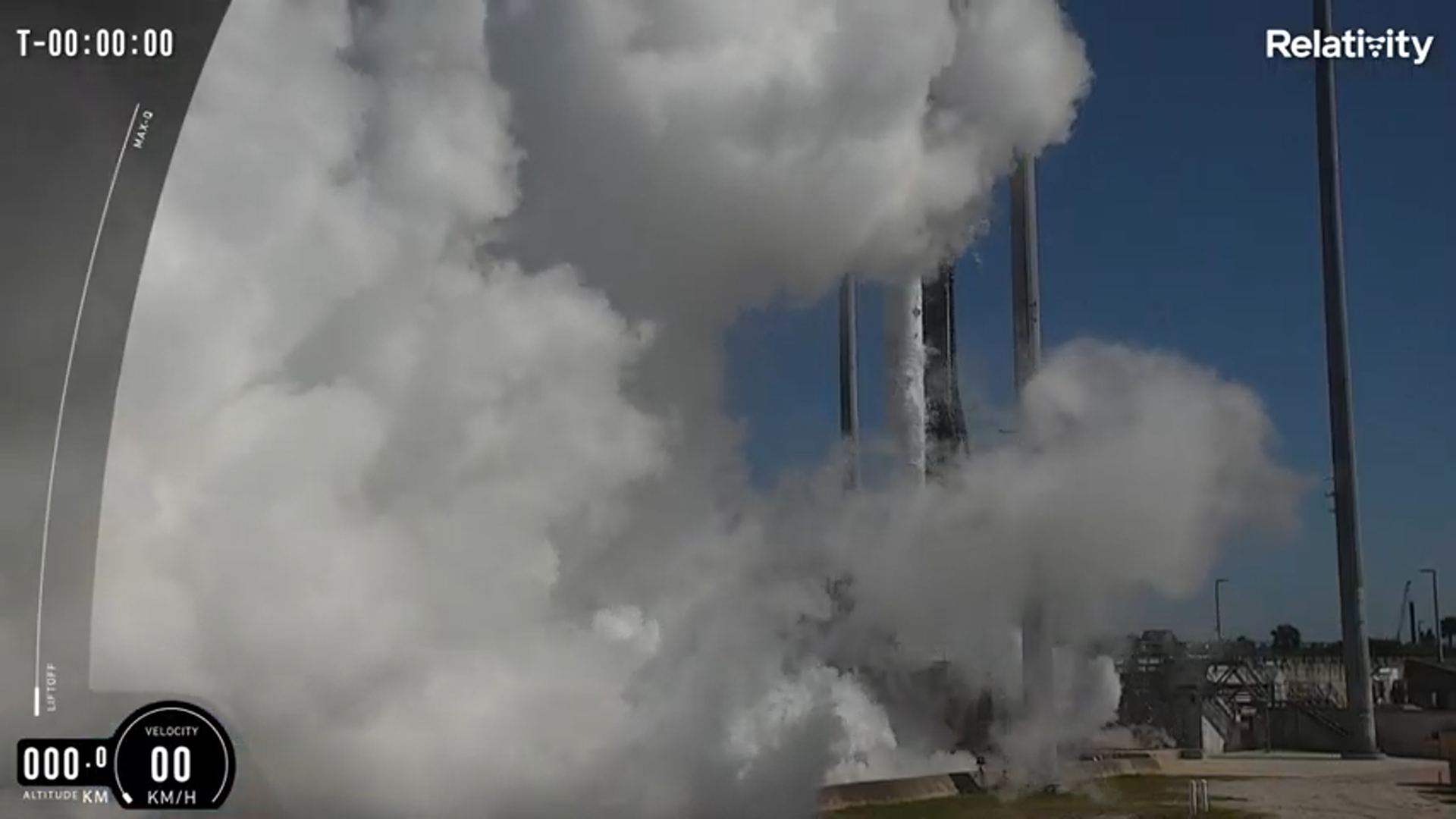
However, the gremlins were not quite done with this snakebitten mission. Clocks halted again at T-70 seconds, when a “Hold, Hold, Hold” call was issued in response to a boat which had strayed inside the launch danger area.
With the offending vessel shooed out in time, the countdown resumed, counting towards a liftoff at 2:46 p.m. EST. At T-6 seconds, the nine Aeon-1 engines at the base of Terran-1’s first stage roared to life, burning furiously with an eerie blue-hued exhaust and a raging propulsive yield of 207,000 pounds (95,000 kilograms). Then, with agonizing suddenness, T-0 came…and went, but the rocket continued to sit motionless on the pad.
Countdown clocks displayed an ominous 00:00:00, with a hold having been automatically commanded just prior to TE retraction and liftoff. Engineers promptly headed into an analysis of the vehicle’s health to consider whether another attempt was feasible, with Mr. Walker noting that the abort was prompted by a Launch Commit Criteria (LCC) violation at T-0.5 seconds and that the team was “assessing recycle opportunities”.
The clock was recycled to a hold-point of T-45 minutes, before it resumed counting shortly after 3 p.m. EST, tracking a new T-0 of 3:55 p.m. EST, only five minutes before the closure of Saturday’s window. This was subsequently modified to 4 p.m. EST, right at the end of the window, as the spectre of a second scrub ominously loomed.
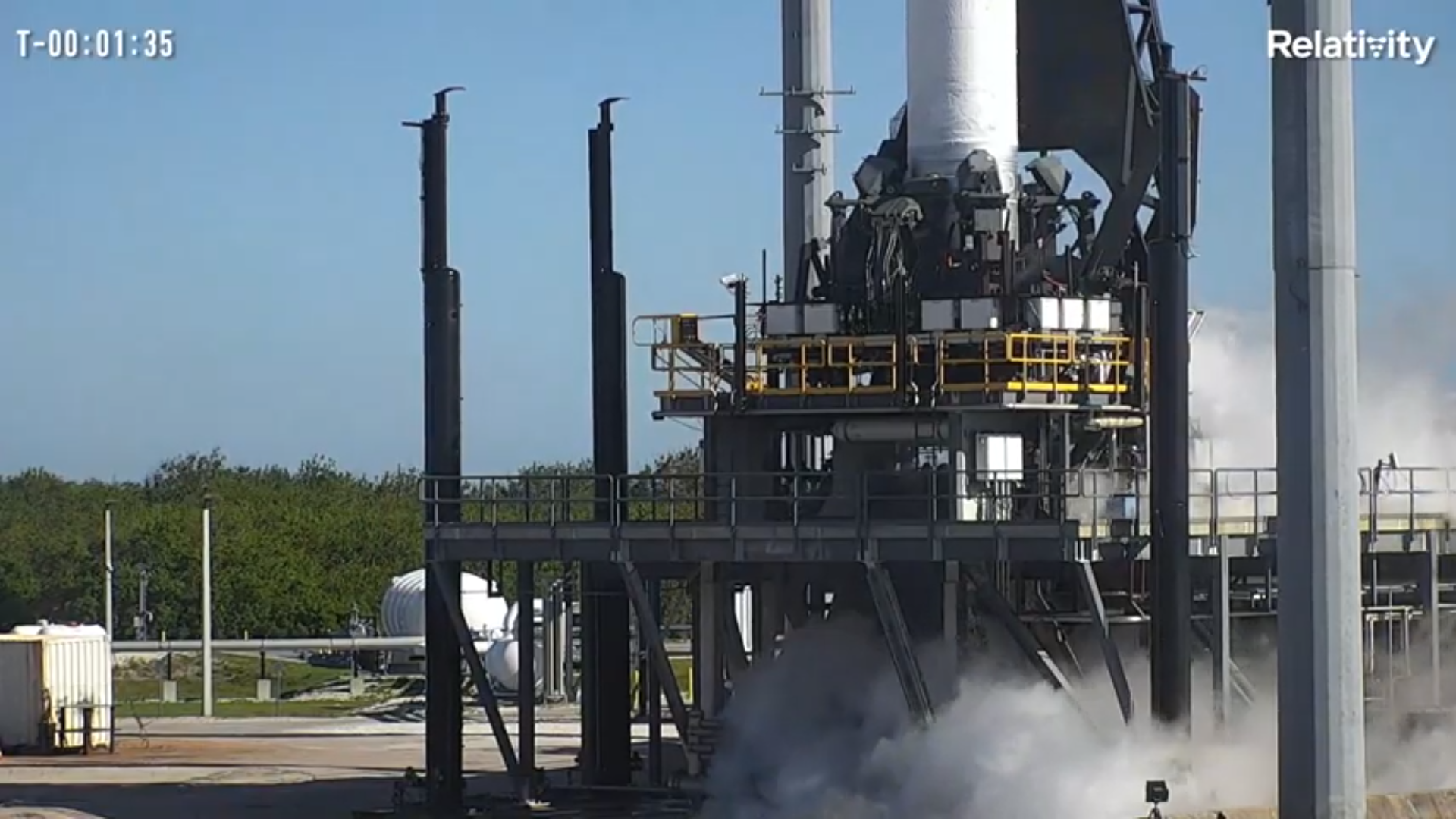
In a remarkable turnaround which showcased the professionalism of the Relativity team, clocks continued counting down to T-45 seconds, when another autonomous hold was called. This time, however, with an “instantaneous” launch dictated by the closure of Saturday’s window, there was simply no option to recycle and the attempt was scrubbed.
“Thanks for playing,” said Mr. Walker, repeating his phrase from Wednesday’s scrub. As this AmericaSpace story was being prepared, Relativity revealed that “based on initial data review, vehicle is healthy”, but had yet to announce a revised No Earlier Than (NET) target for its next attempt to get Terran-1 airborne.






3 Comments
3 Pings & Trackbacks
Pingback:Rocket Lab Launches Second Electron Mission from U.S. Soil, Others Wait in Wings - AmericaSpace
Pingback:Relativity, SpaceX Target Florida Launches This Week - AmericaSpace
Pingback:On Third Try, Relativity Launches Terran-1, Fails to Achieve Orbit - AmericaSpace